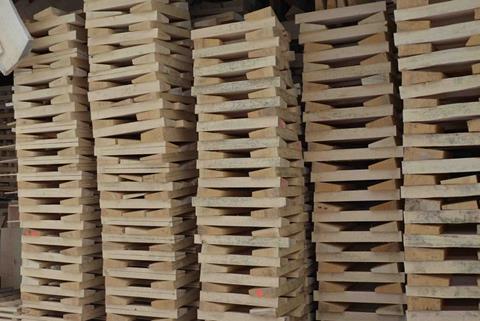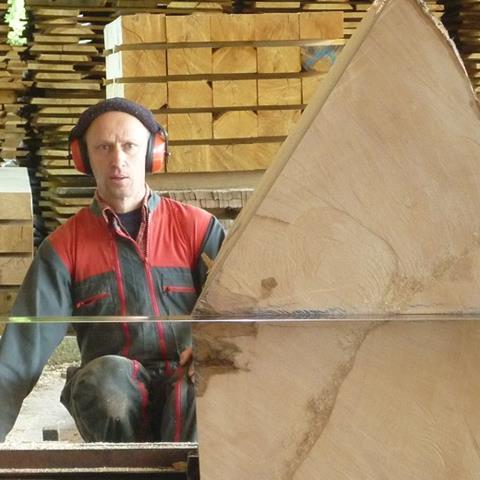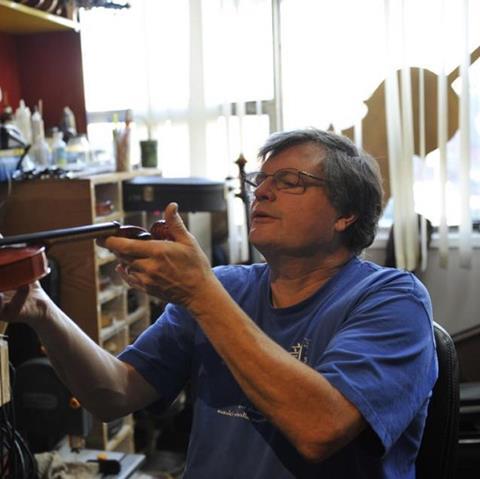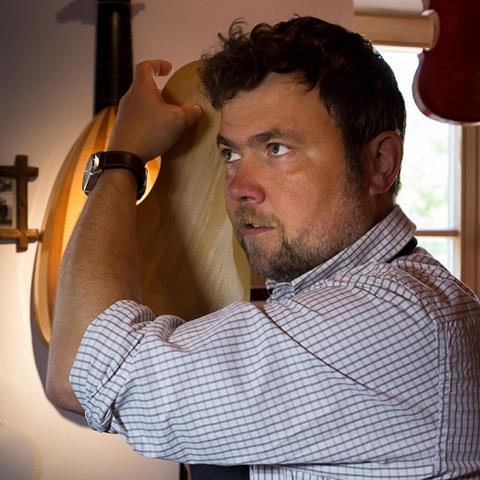For a beginner luthier, choosing the perfect spruce and maple for an instrument can be a confusing process. Three experts in wood selection offer some guidelines

The question: As an amateur violin maker, I would appreciate some guidance regarding the selection of good tonewood. I recently attended a trade fair where several vendors had vast arrays of tonewood for sale, but had nothing to say when I asked their opinions – and in any case, I felt I didn’t know the right questions to ask. Is there an optimum age, or does wood simply get better as it gets older? Should I be looking at the width of the grain? And is tapping the wood all around before making my choice recommended?

BERNARD MICHAUD
First of all, any wood you purchase should be at least three to four years old. Immediately after the tree is cut down, the wood will have a high moisture content and it takes a long time to dry out. Furthermore, various chemical processes will be acting on the wood to make it stronger; these processes can continue in a small way for decades, but after four years the wood will have become stable, mature and ready to use.
Spruce must always be quarter-sawn, and I recommend that maple should be too. The grain should be very straight, with no twisted fibres, and the growth rings should be close together. (This is one reason why wholesalers normally choose trees that grow at high altitudes.) If the grain is irregularly spaced – short, long, short, long – you’ll find that the wood will be unusable.
When choosing maple, the aesthetic quality of the wood is obviously a primary concern for makers, but they should also check its weight and look at the figure (large and deep is preferred). Old maple trees from primitive forests in Bosnia have long been considered the best in Europe, but they are becoming rare because so much forest has been over-exploited during the past two decades.
If the grain is irregularly spaced, you’ll find that the wood will be unusable
As a wood supplier I used to test the acoustic qualities of every piece I sold with a lucchimeter. This would measure the speed of sound through the wood, from which I could work out its elasticity and sound quality. Nowadays, though, I don’t think I need the lucchimeter as my knowledge has developed over so many years. I think the same is true for all instrument makers – as they become more experienced and try out different kinds of wood for themselves, their most reliable resource is their own intuition.
Bernard Michaud is manager of Le Bois de Lutherie, a wood supplier based in Fertans, France
www.bois-lutherie.com

ROSS HILL
I empathise with your concerns. Here are my thoughts on what to look for when selecting wood: • Physical appearance is important, but stiffness across the grain is more significant • Wood should be straight-grained and split from the log; no twist or sapwood • Avoid compression grain, such as twisted summer growth, or any other obvious anomalies • Air-dry the wood in a graduated process, avoiding accelerated drying. Thicker wood requires more time. When I started out, 30 years was seen as an optimal drying and ageing period. Increased drying costs more commercially. I recommend a minimum of seven years, and more as you are able – anything up to ten years. This results in beneficial oxidation and hardening of the wood structure.
As a general rule, I find a ‘singing’ tree is stiffer across the grain, which also correlates with the sonority of plates when tapped. I hold the wood a third of the way down and a third across the width of the plate, and tap lightly. This gives the full tonal quality. The most critical area of the top plate is in the central median, where the best grain is quartered, of consistent width, and clear of blemishes.
A maker of proven experience with your model of instrument will likely share their wood sources with you. Finally, with the depletion of wood resources globally, we need to conserve and support reforestation sustainability. Purchase from suppliers who respect wood management.
Ross Hill is a luthier based at Aeolian Strings in Calgary, AB, Canada
www.aeolianstrings.com

ANDREAS PAHLER
I will try to answer your questions in order. First, there is no optimum length of time for seasoning. There are some spruce trees where the wood is ready for instrument making more or less right after cutting. However, those trees are rare, and they often have a rotten centre. They feel ‘soft’ when cut with a chainsaw. Most spruce trees as well as maple need a minimum of three years to dry out, followed by several years more for seasoning and ageing.
Most wood will have been planed before going on sale. Its behaviour after planing is always interesting: the planed surface can become distorted after six months or so, in which case further storage time is needed.
Regarding the width of the grain I need to make a distinction between spruce and maple. For spruce, there is a standard measurement of approximately 10 grains per centimetre – some historical makers, such as Jacob Stainer and those from Mittenwald, had access to narrower-grained wood, whereas Dutch and English luthiers would use wider-grained wood, probably because it was the only sort available. Spruce with a wider grain distance and small late growth has less density compared to narrow-grained spruce. For maple there is no relationship between grain distance and the wood’s acoustic qualities. The maker’s preference dictates the selection of maple for the back.
When it comes to tapping the wood, I like to test it while holding it between my fingers. Weak tonewood will sound odd; good tonewood will produce a defined and lasting tone. The pitch of that tone will be affected by the dimensions of the piece – the larger the deeper.
Andreas Pahler is director of the Mittenwald-based wood supplier Alpentonholz
www.alpentonholz.de
This article was first published in the December 2015 issue of The Strad
An exclusive range of instrument making posters, books, calendars and information products published by and directly for sale from The Strad.
The Strad’s exclusive instrument posters, most with actual-size photos depicting every nuance of the instrument. Our posters are used by luthiers across the world as models for their own instruments, thanks to the detailed outlines and measurements on the back.
The number one source for a range of books covering making and stringed instruments with commentaries from today’s top instrument experts.
American collector David L. Fulton amassed one of the 20th century’s finest collections of stringed instruments. This year’s calendar pays tribute to some of these priceless treasures, including Yehudi Menuhin’s celebrated ‘Lord Wilton’ Guarneri, the Carlo Bergonzi once played by Fritz Kreisler, and four instruments by Antonio Stradivari.






































No comments yet